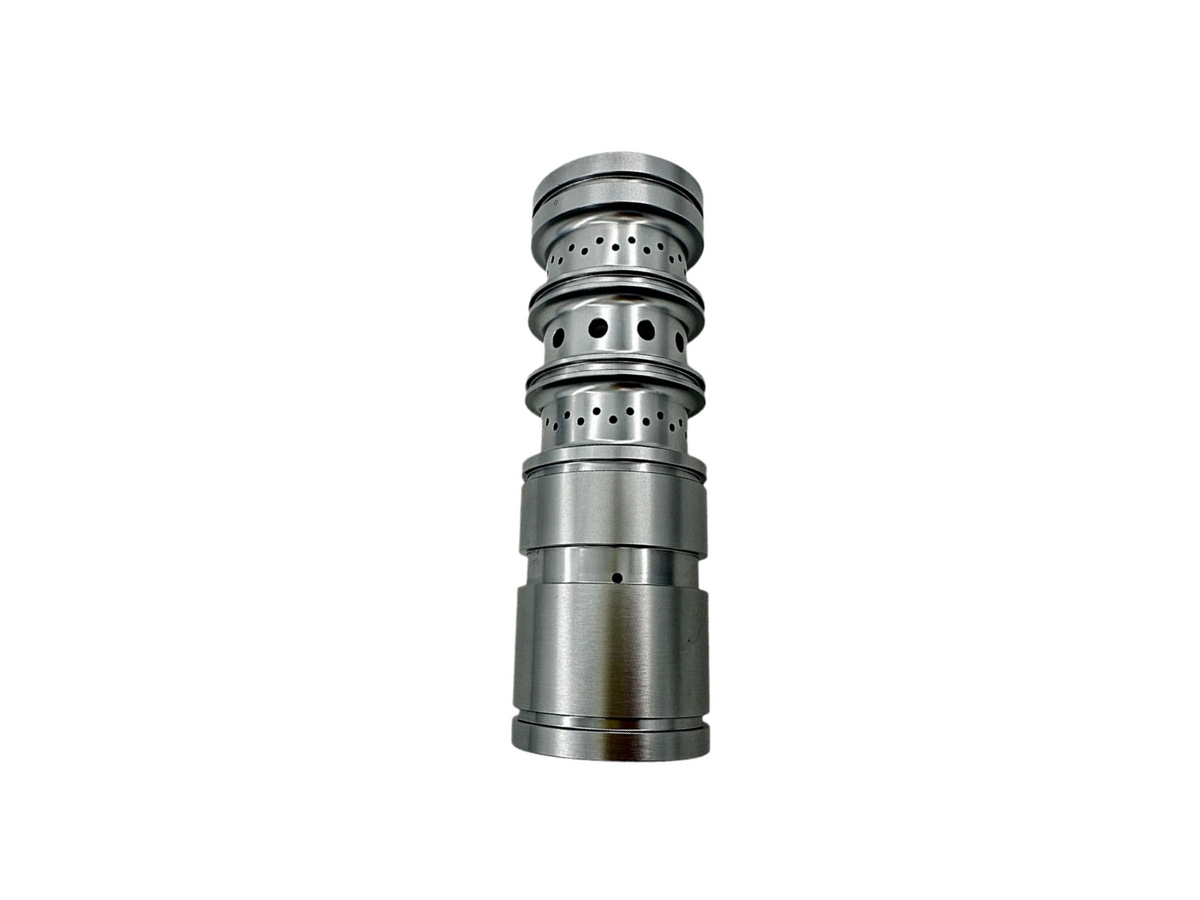Mastering Deep Hole Drilling for Superalloys: A Case Study in Aerospace Applications
Introduction
In the Aerospace and Aviation industry, components manufactured from superalloys frequently require deep-hole drilling, a process notorious for its complexity and precision requirements. Superalloys such as Inconel, Hastelloy, and Rene alloys offer exceptional strength, thermal resistance, and corrosion resilience, making them ideal for critical aerospace components such as turbine shafts, combustion chambers, and fuel delivery systems.
Advanced CNC drilling services, particularly deep hole drilling, are essential in fabricating precise, straight, and smooth internal channels within these challenging materials. Mastering deep-hole drilling techniques ensures operational reliability, component integrity, and performance longevity in aerospace applications.
Superalloy Materials
Material Performance Comparison
Superalloy | Tensile Strength (MPa) | Yield Strength (MPa) | Max Operating Temp (°C) | Typical Aerospace Uses | Advantage |
|---|---|---|---|---|---|
1240-1450 | 1030-1200 | 700 | Turbine shafts, jet engine parts | Excellent creep resistance, strength retention | |
790-850 | 360-450 | 1030 | Fuel delivery systems, combustion chambers | Superior corrosion resistance, thermal stability | |
1230-1400 | 900-1050 | 980 | Exhaust nozzles, critical fasteners | High-temperature strength, oxidation resistance | |
1100-1350 | 850-950 | 900 | Turbine blades, structural supports | Outstanding fatigue resistance, thermal stability |
Material Selection Strategy
Selecting appropriate superalloys for aerospace deep drilling applications involves specific performance criteria:
High-temperature turbine shafts requiring strength and creep resistance: Inconel 718 is preferred.
Fuel systems exposed to corrosive fuels and elevated temperatures: Hastelloy C-276 offers unmatched corrosion resistance.
High-stress exhaust nozzles and fasteners needing strength at extreme temperatures: Rene 41 provides superior oxidation resistance.
Structural turbine components demanding exceptional fatigue life: Nimonic 90 is the optimal choice.
Deep Hole Drilling Processes
Process Performance Comparison
Drilling Technology | Hole Diameter Range (mm) | Depth-to-Diameter Ratio | Typical Aerospace Uses | Key Advantages |
|---|---|---|---|---|
2-50 | Up to 100:1 | Turbine shafts, coolant channels | High depth accuracy, excellent surface finish | |
20-200 | Up to 400:1 | Landing gear components, engine casings | Superior chip removal, efficient large-diameter drilling | |
1-50 | Up to 50:1 | Complex fuel systems, precision nozzles | Versatile capabilities, precision control | |
0.1-3 | Up to 100:1 | Cooling holes in turbine blades | Exceptional accuracy in small-diameter holes |
Process Selection Strategy
Choosing the right deep hole drilling technology depends on aerospace component specifications:
Deep, narrow channels with high precision: Gun Drilling offers unmatched accuracy and surface integrity.
Large-diameter, ultra-deep holes for landing gear or casings: BTA Drilling is optimal for efficient material removal and hole straightness.
General precision drilling in superalloys: CNC Drilling Service provides flexibility and excellent depth control.
Small, highly precise cooling holes in turbine blades: EDM Drilling ensures superior accuracy and minimal thermal distortion.
Surface Treatment
Surface Treatment Performance
Treatment Method | Corrosion Resistance | Wear Resistance | Temperature Stability (°C) | Typical Aerospace Uses | Key Features |
|---|---|---|---|---|---|
Superior (≥800 hrs ASTM B117) | Moderate-High | Up to 400 | Fuel system components, turbine shafts | Smooth surfaces, enhanced fatigue resistance | |
Excellent (≥1000 hrs ASTM B117) | Moderate-High | Up to 1200 | Turbine blades, combustion chambers | Extreme thermal insulation, oxidation resistance | |
Superior (≥1000 hrs ASTM B117) | High (HV2000-3000) | Up to 600 | Fasteners, shafts | Enhanced hardness, abrasion resistance | |
Excellent (≥600 hrs ASTM B117) | Moderate | Up to 350 | General aerospace fittings | Surface cleanliness, corrosion protection |
Surface Treatment Selection
Surface treatments significantly improve aerospace superalloy components:
Components exposed to extreme heat and oxidation: Thermal Barrier Coatings (TBC) provide robust thermal protection.
Precision shafts and fuel system components: Electropolishing improves internal surface quality, reducing fatigue risks.
Fasteners and components subjected to mechanical wear: PVD Coating dramatically increases durability.
General-purpose aerospace parts: Passivation ensures surface purity and corrosion resistance.
Quality Control
Quality Control Procedures
High-precision hole diameter and straightness inspections using bore gauges and Coordinate Measuring Machines (CMM).
Internal surface quality assessment with video scopes and profilometry.
Ultrasonic inspection (UT) and radiographic testing (RT) for detecting internal defects.
Mechanical property tests (tensile, yield strength) conforming to aerospace material standards (ASTM, AMS).
Corrosion resistance evaluation through ASTM B117 salt spray testing.
Full documentation and traceability adhering to AS9100 and ISO 9001 standards, ensuring aerospace industry compliance.
Industry Applications
Deep-Hole Drilled Superalloy Applications
Precision turbine shafts and engine component cooling channels.
High-performance fuel delivery systems.
Structural supports and high-stress fasteners.
Turbine blades and combustion chamber components.
Related FAQs:
Why is deep hole drilling challenging in aerospace superalloys?
What are the advantages of gun drilling for aerospace components?
Which superalloy offers the best performance for high-temperature aerospace applications?
What surface treatments improve the performance of drilled superalloy components?
What aerospace quality standards govern deep hole drilling processes for superalloys?

